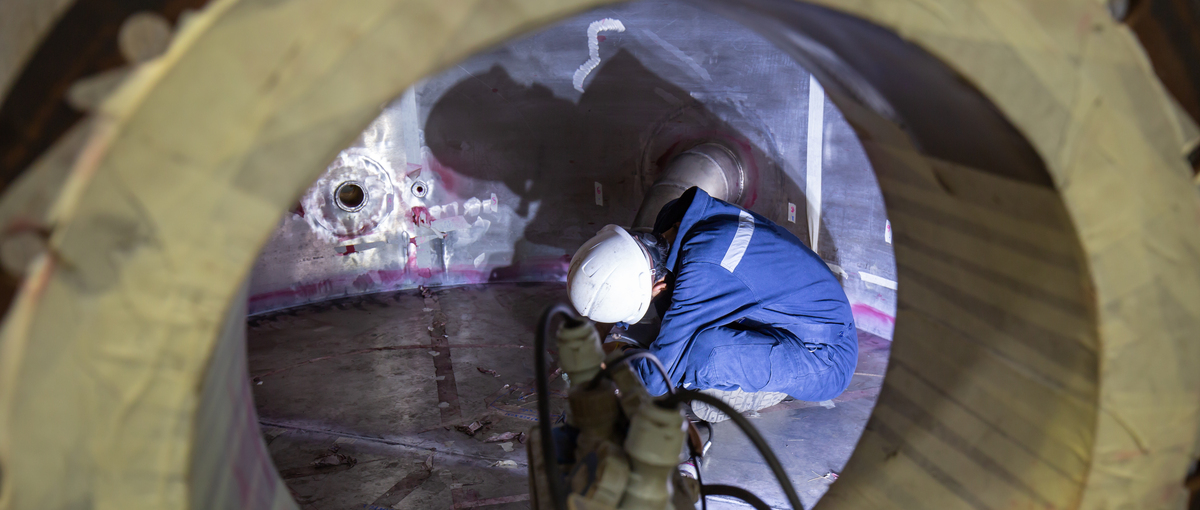7 Types Of Confined Space Hazards That Could Kill You
7 Types Of Confined Space Hazards That Could Kill You
February 20, 2023 |
Spaces that are confined are dangerous. As you can’t always avoid working in confined spaces, you must be aware of their risks. Read on to learn about the seven primary confined space hazards.
What is a Confined Space?
A confined space is a location that is substantially enclosed (though not always entirely). Often, there is a possibility of serious harm or death caused by hazardous materials or poor environmental conditions.
Due to the nature of the work, some construction spaces may become confined. This includes areas like trenches, unventilated rooms, or building voids.
The results of an accident happening in a confined space can be fatal. Here are the seven most common types of confined space hazards to be aware of:
- Drop in Oxygen Levels
Within a confined space, organic processes can remove oxygen from the surrounding atmosphere. When mixed with oxygen, groundwater with chalk, or limestone, certain soils can produce carbon dioxide, displacing oxygen in the atmosphere. The formation of rust inside tanks might also result in an oxygen shortage.
- Fumes, Gases, and Vapors
Due to poor ventilation, confined spaces are particularly susceptible to the buildup of poisonous vapors and gases.
Deadly gas leaks from polluted land or burst gas pipes, for example, can influence a small space. Alternatively, welding, applying adhesives, or painting can produce deadly fumes.
These gases and vapors have the potential to produce a hazardous environment in tight spaces. This fact is especially true when the space has minimal extraction or ventilation.
- Flooding
Liquids can swiftly flood the enclosed space, particularly in drainage or sewage operations. Liquids in an enclosed area can trap workers and perhaps even cause them to drown.
However, there are other precautions you must take on top of securing the chances of liquids flooding. In collapsed trenches, soil and other debris can fill a space quickly, putting anyone inside at risk of becoming trapped or buried.
As confined places can be small, flooding can happen quickly, leaving no time to escape.
- Dust
Within confined spaces, dust can accumulate naturally or as a result of drilling or grinding. Inhaling too much dust can lead to lung issues, and hazardous dust can even be fatal. Dust accumulation can also raise the risk of a fire or explosion, particularly in areas with poor ventilation.
- Fire and Explosions
Flammable dust, liquids, gases, and vapors inside an enclosed space increase the risk of fire and explosions. Any work or items resulting in sparks may also result in a fire or explosion if used in the enclosed space.
Recall how the first item in this list discusses oxygen shortage. Of course, too much oxygen is hazardous as well. High oxygen levels raise the possibility of fire and explosions.
- Temperature
A harmful rise in body temperature might occur due to difficult construction work, heated conditions, or naturally occurring heat. These situations can quickly become problems in confined spaces that are challenging to escape, even under normal circumstances.
Due to the constrained nature of a confined space, heat can build quickly. Heat stroke, exhaustion, and collapse may occur consequently.
- Access Restrictions
In addition to being dangerous, confined spaces can simply be challenging to enter. This makes it difficult to escape and could hinder emergency rescue attempts.
Therefore, it’s crucial to understand that you must secure your and your workers’ safety before entering any confined space. As part of your emergency plan, working with a confined space rescue team on hand is critical for the safety and wellbeing of your staff during emergencies.
Controlling the Hazards in Confined Spaces
If working in confined spaces is unavoidable, you should conduct a confined space risk assessment to determine the dangers and the safety measures required to control the risk.
You could consider the following controls:
- Atmosphere testing
- Plant shutdown
- Isolation of existing tools or services
- Setting up a safe system of work
- Ventilation and general cleaning
- Illuminating the space adequately
- Breathing devices
- Tools that don’t spark
- Communication systems
- Training, monitoring, and supervision
- Rescue operations and emergency plans
- Lifelines
Working in confined spaces carries a significant level of risk. As such, you must adhere to a safe work system designed using a risk assessment, a method statement, control measures, and work permits.
Everyone working in a confined space must have the appropriate safety and rescue training. These prerequisites ensure you complete the work safely without endangering the workers.
Need help preparing your workplace to meet safety standards? Reach out to Rescue Solutions today, the one-stop shop for all your safety needs!
